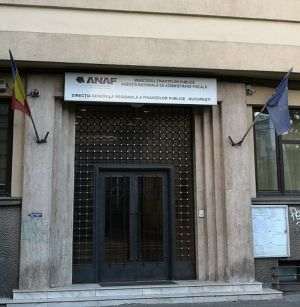• The Ministry of Finance borrowed 1 billion lei through 7-month certificates
A number of five banks yesterday attracted 2.38 billion lei yesterday (546 million Euros) from the National Bank of Romania (NBR), with a maturity of one week, at the policy rate of 6% p. a.. The liquidity injection was made through a repo operation, through which the NBR provides liquidity to the banks and receives government bonds in exchange.
On the last day of the past week, the Central Bank had lent to seven banks 1.657 billion lei (380 million Euros), again through a repo auction.
Mr. Daniel Ionescu - analyst in macro-finance - said: "Through this kind of operations, the NBR accepts taking into custody receivables found in the portfolios of the banks, including government bonds and releases liquidity, effectively creating money «ex-nihilo».
In my opinion, what the NBR did yesterday is in fact an advance preparation of the government bonds auctions which the Ministry of Public Finance will carry out this month, being intended to ensure the liquidity needed to buy them from the commercial banks in question. These operations are "repo" contracts with a 1-week maturity which are completed through the opposite operation on maturity, through operations called "reverse-repo" by which the money created is destroyed. According to records displayed on the website of the NBR and to my knowledge, such operations were seldom conducted. It is possible that the extension of the deadline for the reverse repo may be performed «a la longue», so the NBR will accumulate more government bonds. We should remember that at the end of last year, the NBR had receivables in custody (including, and in particular, government bonds) worth more than 68 billion lei".
For the month of December, the Treasury plans to borrow 4.5 billion lei from banks, through five issues of government bonds and treasury notes.
In yesterday's auction for a discount treasury notes issue, the Ministry of Finance borrowed 1.06 billion lei, a little over the indicative value. The average yield was 6.6%, down from the one paid on the previous operation for 9-month certificates.
Starting with October 17th, the NBR hosted a repo auction everyday, by which it lent money to banks for 1 week.
The interventions of the NBR on the currency market significantly reduced liquidity in the system, and on November 21st ten banks drew 6.246 billion lei (.1,43 billion Euros) through such an operation. The amount injected on the date mentioned was the greatest placed by the Central Bank after February 2010, when six banks borrowed 6.418 billion lei.
Data about the currency reserves at the end of November , published on Friday, indicated a drop of 454 million Euros, from 32.2 billion Euros, at a time when bank dealers frequently suspected intervention from the Central Bank on the currency market through indirect selling of Euros in order to support the national currency.
A report by ING published yesterday states: "According to our calculations, the Central Bank has used approximately 0.9 billion Euros to control the depreciation of the leu over the course of November (...) However, seasonal factors are probably favorable to the leu this month, but if the currency reserves will continue to drop in the coming months, this would probably attract the interest of speculators, who seemed rather inactive during this period". Yields for 1-week placements ranged between 5.64 - 6.14% on Monday.
In the first 11 months of 2011, the Ministry of Public Finance borrowed approximately 46 billion lei from banks, and over 41 billion lei domestically in 2010.
The budget deficit scheduled for 2011 and agreed upon as part of the financial package with the IMF and the European Union amounts to 23.953 billion lei.


























































